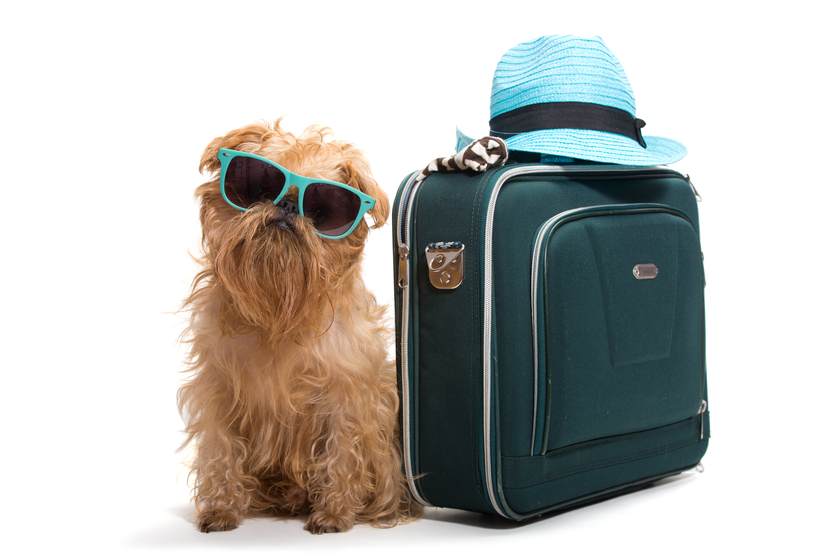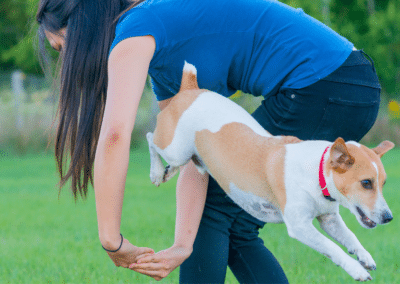Every year, millions of Americans hit the road in search of fun, adventure, or just some peaceful time off. More and more, these plans include traveling with their four-legged companions. Travel can be stressful for canines. They can become sick, injured, or lost in the process. Planning for potential dog hazards can go a long way towards making your vacations more relaxing and memorable for you and your furry friends. Here are some tips to maintain dog car safety!
Is Your Dog Healthy Enough to Travel?
First, if your pet does not travel well (shows fear, anxiety, and/or vomits from motion sickness) you should consider leaving them at home. Leaving them with a friend or a professional pet sitter can be a good choice for both you and your dog. Also, consider their existing age and any health issues that may create additional stress on them while traveling. Long trips of any kind can be hard on senior canines. So consider this as a guideline:
Always do what’s best for your pet.
Preparing for Dog Car Safety
Before any long trip with a dog, it is a good idea to have them examined by a veterinarian. All protective vaccinations should be brought up to date and any medications your pet may need should be refilled. If your pet requires medication to reduce anxiety or motion sickness, be sure to test the medication on your furry friend several days in advance to ensure that they don’t suffer any adverse side effects. Finding an emergency veterinarian to take care of an allergic reaction to a medication can be difficult in many areas of the country.
If your plans include traveling with your pet from the United States to Canada or Mexico you should check with these countries to see if there are any restrictions that you need to adhere to. For Canada, you will need to bring a certificate issued by a veterinarian that clearly identifies the animal and certifies that they have been vaccinated against rabies during the preceding 36 month period. Be sure to contact the government of the province you plan to visit, as each province has its own requirements.
Packing for your dog is important. Essential items you need to take with you include medications, medical records, a first aid kit, bedding, leash, collar and tags, grooming supplies, current pet photo, a favorite toy or two, an approved pet carrier, food bowl and water dish. Keep your pet items packed separately from your own as this will make it easier to find them in a pinch. If you’re planning a long journey and will need to stay in pet friendly accommodations on the way and be sure to secure these accommodations before you hit the road.
Safe Travels
Dogs should always be restrained in a pet safety harness, travel kennel, vehicle pet barrier, or pet car seat when riding in a car. They not only protect your canine from injury, but they keep you from being distracted while you drive. Sudden stops can propel a 50 pound dog at high speeds from the back to the front, causing serious injury to animals and passengers. If your pet prefers a travel kennel, be sure it is well ventilated and stabilized. Many pet owners prefer vehicle barriers, particularly for larger dogs. Vehicle barriers are best suited for SUVs. Smaller pets are best suited for pet car seats. The car seat is secured in the back seat using a seat belt and your pet is secured in the car seat with a safety harness.
Never let your dog ride in the front passenger seat or stick their heads out of a window. Accidental deployment of a front seat airbag, or being hit by flying debris can endanger your pet and put a damper on any family trip. This should go without saying, NEVER travel with a pet in the back of a pickup truck. Some states have laws restricting such transport and it is always dangerous. Finally, never leave your pet alone in a parked car. They could be stolen or suffer from heat distress. On warm days, the temperature in a vehicle can rise to 120 degrees in minutes, even with the windows slightly open.
Additional Tips to Maintain Dog Car Safety
- Plan frequent stops to stretch your legs and exercise your dog.
- When outside your vehicle, make sure that your dog is always on a leash and wearing a collar with a travel identification tag.
- Always carry fresh water for them. Remaining hydrated is especially important.
- In case of a medical emergency, bring along your pets medical records and contact information for your veterinarian in case they are needed for consultation.
- Keep feeding to a minimum during travel. Be sure to feed them their regular pet food.








0 Comments